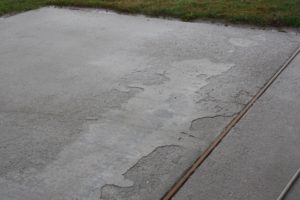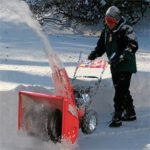Whether you can’t wait until the first flurries fall, or you spend the winter dreaming of the warmer days of spring and summer, we should all know how best to manage snow on our own properties. In doing this, safety of course is the primary concern. But in addition to safety, there are a few other considerations, such as cost, effort, and environmental concerns.
Of the different snow management techniques, we can use either mechanical, chemical, or traction control methods. Mechanical methods include plowing, blowing, and shoveling; chemical methods include a variety ice melt chemicals; and traction methods include grit type control. Snow amounts, temperatures, type of precipitation, and weather conditions, such as wind, all affect how to manage snow.
Mechanical Methods
When it comes to mechanical methods, plowing can move the most snow in the shortest amount of time. One thing to keep in mind if you plow is that you should not always wait until the snowstorm is over to begin removal. It is often much easier to push three inches of snow twice, than six inches of snow one time.
Next in terms of time, is snow blowing. For long sidewalks and short driveways, this is often the easiest and least expensive method of moving snow. Drawbacks to snow blowing include both noise, and fossil fuel emissions.
Shoveling snow is labor intensive, but great exercise and a great way to get outdoors in the winter. I love using it to avoid doing other chores and housework! Once again, it is often easier to shovel several times during a storm than once at the end. And often when you shovel in the middle of a storm, you will find yourself in a winter wonderland, where all is quiet and you are one of the only people outside. When this happens, take a moment (and a rest), and appreciate how magical snow can be.
Chemical Methods
Of course, after the snow is removed from the walks and drives, we often use chemical methods to make these surfaces remain safe for walking. As the name implies, ice melt is a term used for chemicals that cause ice to melt, and include salt (sodium chloride), calcium chloride, calcium magnesium acetate (CMA), magnesium chloride, and potassium chloride. Of these, salt is the least expensive but most corrosive, damaging to plants and concrete, and possibly harmful to pets and the environment.

The uneven surface of this concrete is called spalling, caused by freeze and thaw of water after using ice melt.
Regular rock salt will melt ice to temperatures of 22⁰, but below that it becomes much less effective. If you live along a road that is salted heavily, or use it on your driveway, consider salt tolerant plants along these areas.
The other ice melt products are effective from 12⁰ (for potassium chloride) to -25⁰ (for calcium chloride). Although these products generally cost more than rock salt, much less product is necessary to melt the same amount of ice, so they can be quite cost effective. These chemicals can actually be necessary for plant growth, but too much of any chemical should be of concern. As with all chemical applications in the landscape, read the label and use the least amount necessary.
Another consideration is the surface to which the ice melt is being applied. All ice melt chemicals have the potential to damage new, or uncured concrete. This is because when it is applied, the melted ice (now water) seeps into tiny spaces in the concrete. When this water then re-freezes, the concrete surface is damaged and begins to chip away in what is known as spalling. For this reason, it is generally recommended that ice melt is not used on concrete that is less than one year old.
Traction Control
Instead of ice melt products, another option is traction control. Sand, ash, and kitty litter all fall into this category. Instead of melting the ice, these products generally sit on top of the ice to make it less slippery. The benefits include cost and safety to the environment. For these reasons, sand is used on most roads and paths at the Chicago Botanic Gardens. My guess is that they are pretty good at managing snow in Chicago! Drawbacks are that they can be messy and damage floors when they are tracked inside. Although if you have ever had a white film from salt on your floors, you will agree that salt is messy too.
Finally, one of the simplest methods of managing snow is to let it melt on its own. If you have several walks to your house, a driveway, and a patio or deck, decide what needs to be cleared, and leave the rest. This will greatly reduce the time, materials, cost, and environmental impact of how you manage snow.
So whether you love snow or think it is a bother, keep in mind the environmental impacts of your snow and ice management decisions, and remember, spring will be here before you know it.



